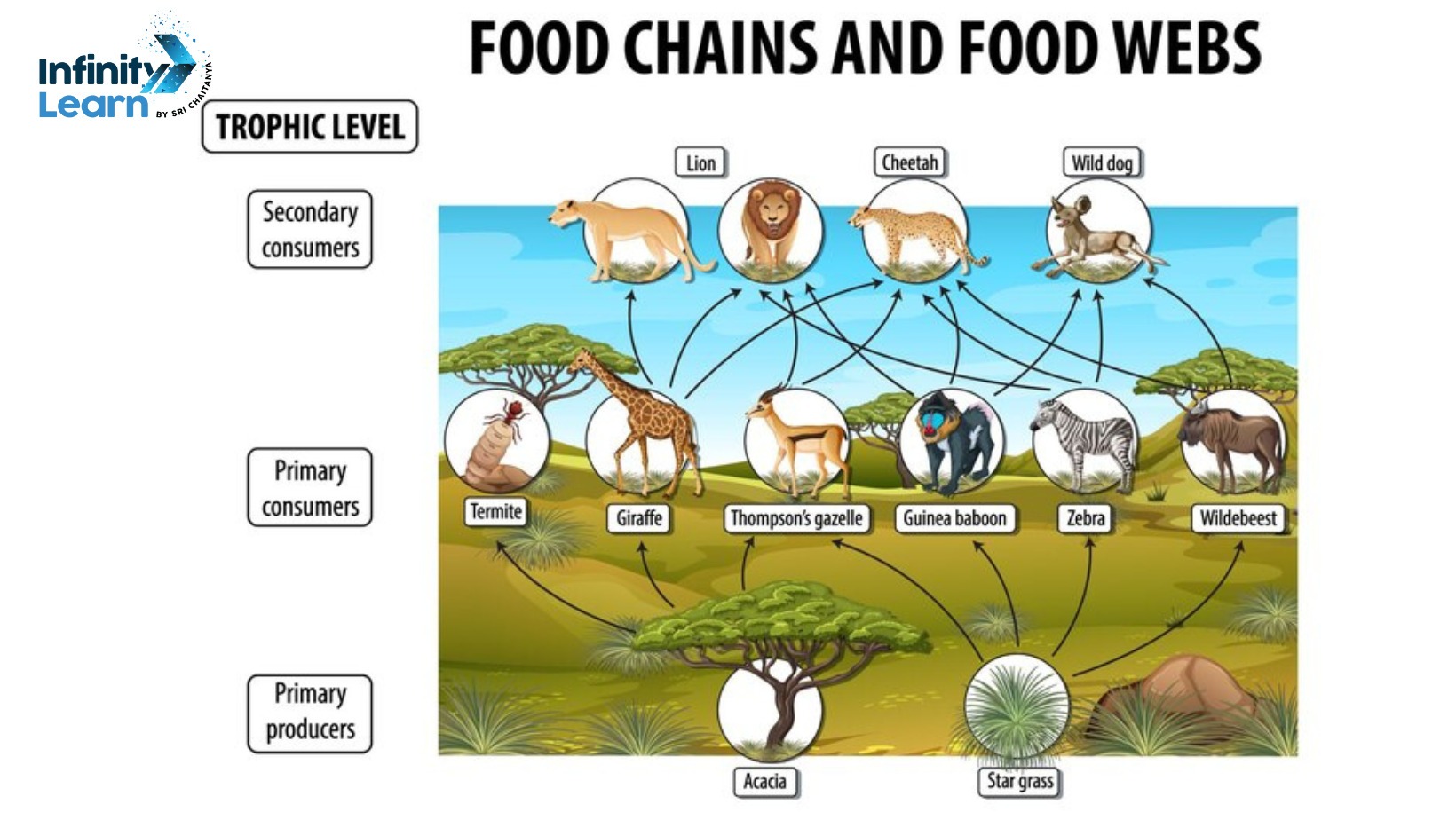Table of Contents
A food chain is like a straight line of different living things. It begins with plants and goes through animals, ending with tiny organisms that break down dead matter. On the other hand, a food web is like a network of many food chains that are connected.
A food chain shows just one path of how living things are linked together. In contrast, a food web shows several paths. Both are important parts of how nature works. They help us understand the connections between different organisms in ecosystems.
Food Chain Diagram

Food Chain
A food chain is a sequence of organisms in an ecosystem where each organism is the food source for the next organism in the chain. It represents the flow of energy and nutrients through different levels of an ecosystem. Here’s an explanation of the components and dynamics of a food chain:
- Producers: These are organisms, usually plants or algae, that produce their own food through photosynthesis. They are the first level of the food chain and form the base by converting sunlight into chemical energy.
- Primary Consumers: Also known as herbivores, these organisms feed directly on producers. They are the second level of the food chain and include animals like deer, rabbits, and insects.
- Secondary Consumers: These are carnivores that feed on primary consumers. They are the third level of the food chain and include predators like foxes, snakes, and birds of prey.
- Tertiary Consumers: These are carnivores that feed on secondary consumers. They occupy the fourth level of the food chain and include top predators like lions, wolves, and large fish.
- Decomposers: These organisms break down organic matter from all levels of the food chain, including dead plants and animals, returning nutrients to the soil. Examples include bacteria, fungi, and certain insects.
Dynamics of a Food Chain
- Energy Transfer: Energy flows from one trophic level to the next in a food chain. Producers capture energy from sunlight, which is passed on to primary consumers when they eat the producers, and so on.
- Nutrient Cycling: Nutrients such as carbon, nitrogen, and phosphorus are cycled through the ecosystem via the food chain and through decomposition by decomposers. This recycling is essential for the health and sustainability of ecosystems.
- Food Web: In many ecosystems, multiple interconnected food chains form a complex network called a food web. This includes various species interacting through multiple feeding relationships, providing stability and resilience to the ecosystem.
- Ecological Balance: Maintaining a balanced food chain and food web is crucial for ecological stability. Changes in one part of the chain can affect the entire ecosystem, highlighting the interdependence of species within an ecosystem.
Food Chain Diagram FAQs
What is a food chain diagram?
A food chain diagram shows how energy and nutrients pass from one organism to another in an ecosystem.
What are the 4 types of food chain?
The four types of food chains are: Grazing food chain, Detritus food chain, Parasitic food chain, and Saprophytic food chain.
What are the 5 parts of the food chain?
The five parts of a food chain are: Producer, Primary consumer, Secondary consumer, Tertiary consumer, and Decomposer.
What is food chain drawing?
A food chain drawing illustrates the flow of energy and nutrients through different organisms in a simple diagram.
Is a food chain a diagram?
Yes, a food chain is represented as a diagram showing the sequence of organisms through which energy and nutrients are transferred in an ecosystem.







